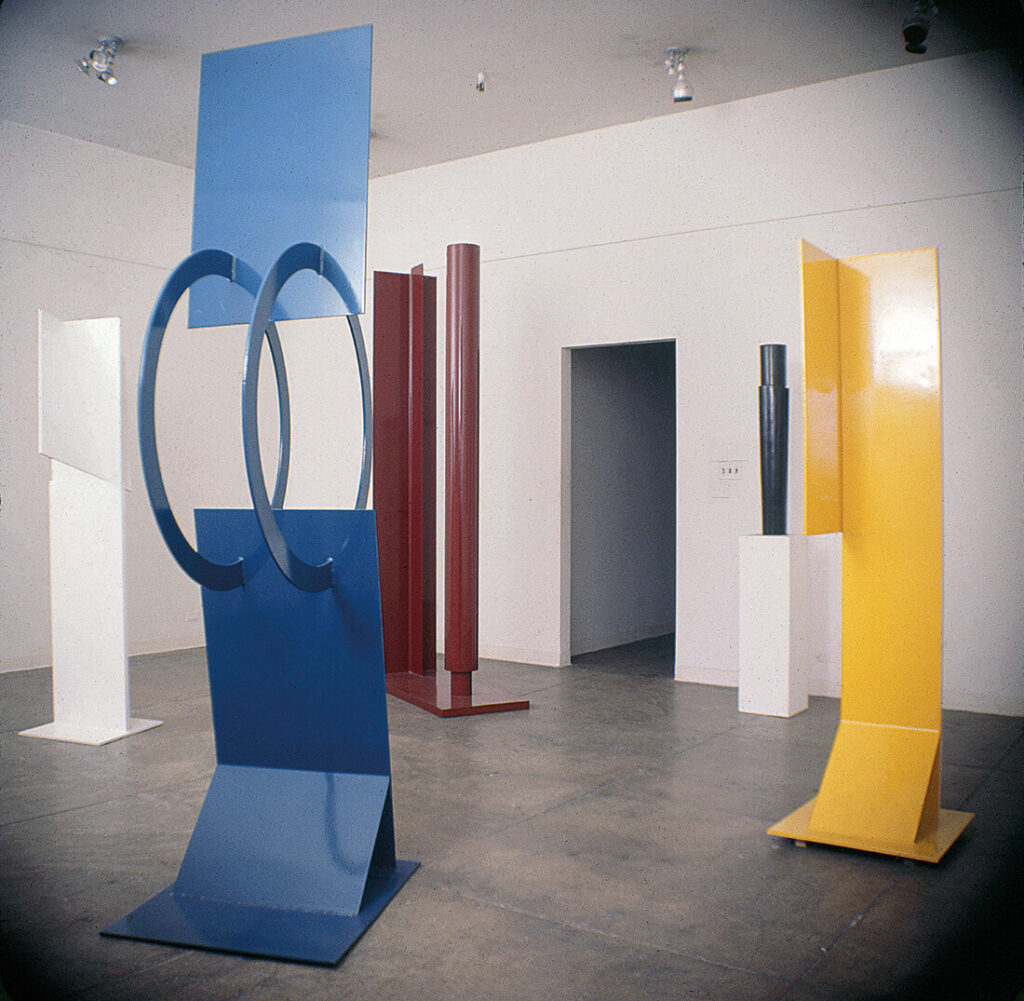After Murray arrived in New York in 1960, the eminent American Colour Field painter Barnett Newman (1905–1970) introduced him to a host of figures in the avant-garde art scene, including the renowned gallerist Betty Parsons. She gave Murray his first solo exhibition in 1965 at her eponymous gallery. The show featured these imposing monochromatic vertical structures. During this period, Murray’s method was still evolving. The industrial fabricators he worked with in New York were set up only to make designed objects from blueprints. Although this initially worked well for Murray, he soon began searching for a more dynamic and direct way of building his sculptures.
-
Installation view of the exhibition Robert Murray, Painted Sculpture at Betty Parsons Gallery, New York, 1965
Photograph by Robert Murray.
Left to right: Robert Murray, Marker, 1964, painted steel, 220.8 x 53.5 x 88 cm, Collection of the Hirshhorn Museum and Sculpture Garden, Smithsonian Institution, Washington, DC, Gift of Joseph H. Hirshhorn, 1966 (66.3708); Robert Murray, Montauk, 1964, painted steel, 274.3 cm high, location unknown; Robert Murray, TO, 1963, painted aluminum, planar column 275 cm high, tubular column 271.1 cm high, Collection of the Art Gallery of Ontario, Toronto, Gift from the Junior Women’s Committee Fund, 1966, 65/60.1-.2. © Robert Murray; Robert Murray, Adam and Eve, 1962–63, bronze, 109.1 x 16 x 15 cm, Collection of the National Gallery of Canada, Ottawa, purchased 1970 (16622). © Robert Murray; Robert Murray, Chief, 1964, painted steel, 231.4 cm high, Collection of Frank Stella.
